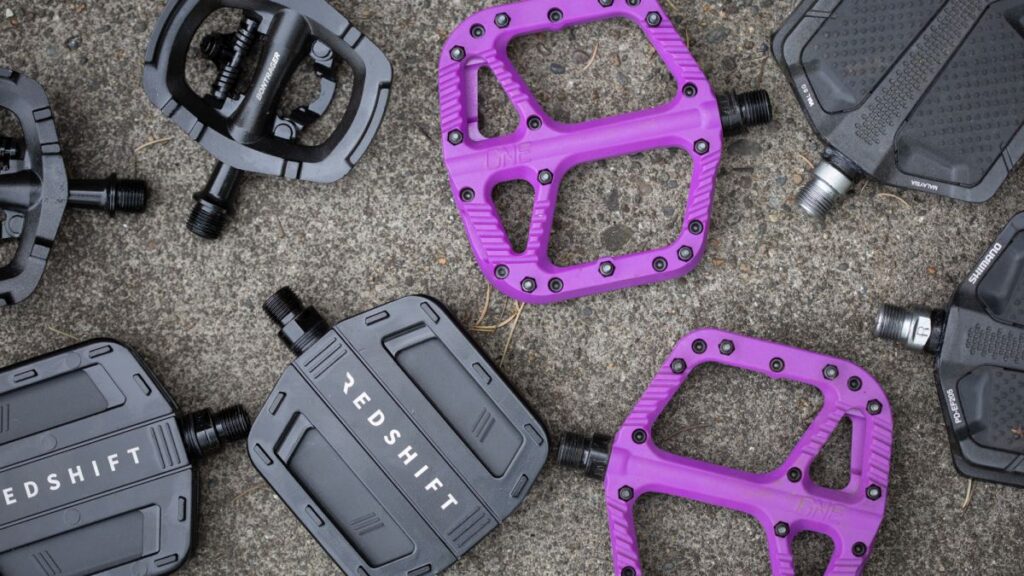Just like the human body is made up of so many little parts that are all very necessary to the functionality of the body, it is for bikes. Each bike part is very necessary for the bike to function properly and bring you adequate satisfaction. For this sole reason, you need to be conversant with the elements that ate used to make the frames of your beloved bike.
To create a functional and reliable bicycle, various elements and materials are utilized, and in this article, the different elements used in bicycles will be revealed while also highlighting their importance.
Read also: Best Racing Bicycles That Are Very Fast And Affordable
1. Steel

Steel is a commonly used element in bicycle frames. It is known for its strength, durability, and relatively low cost. Steel frames provide a sturdy and stable ride, making them suitable for a variety of cycling disciplines. While steel frames are sometimes heavier than other materials, modern advancements in steel alloys have led to lighter and more responsive designs.
It is the perfect bike frame material for someone who wants a custom bike without the high price tag of titanium and has remained a popular material for custom builders, who revere it for its ride-smoothing characteristics. This is because steel is easier and less expensive to work with than carbon fiber, and it’s also denser and stronger than aluminum.
2. Aluminum

Aluminum is another widely used element in bicycle construction, particularly for frames. It offers a lightweight and corrosion-resistant alternative to steel. Aluminum frames are known for their stiffness and responsiveness, providing a lively and efficient ride. Additionally, aluminum’s malleability allows for a variety of frame shapes and designs.
The only notable downside of aluminum is that stiffness often means a harsher ride quality because it doesn’t absorb road buzz as well as the other frame materials, this means that it’s not ideal for bikes that are going to be ridden on dirt roads or long-distance touring.
It is also tricky to repair, and aluminum fatigues more quickly over time.
3. Carbon Fiber

Carbon fiber is a high-performance element used in top-end bicycles. It is prized for its exceptional strength-to-weight ratio. Carbon fiber frames are incredibly lightweight, yet incredibly strong and stiff. This material allows for precise engineering and aerodynamic designs, resulting in bikes optimized for speed and performance.
The primary advantage of the material is that at a given stiffness, carbon fiber is significantly lighter than aluminum, steel, or titanium, and its lower density also means carbon frames do a better job of absorbing road vibration, which means you will have a comfortable ride.
4. Titanium

Titanium is a premium element used in high-end bicycle frames. It combines the best attributes of steel and aluminum, offering excellent strength, durability, and corrosion resistance while being lighter than steel. Titanium frames provide a smooth and comfortable ride quality while maintaining a high level of responsiveness. It takes significant expertise to produce a high-quality titanium bike frame that features a small percentage of aluminum and Vanadium in its composition.
Its only downside is that titanium is rare making it an expensive bike frame material to work with.
Read also: Things To Consider Before Buying A Used Bike
5. Rubber

Rubber plays a vital role in bicycle tires and grips. It is a versatile and elastic element that provides crucial traction and grip on the road. Bicycle tires are typically made from a combination of natural rubber and synthetic compounds to enhance durability, puncture resistance, and rolling efficiency.
6. Chromoly

Chromoly, which is short for chromium-molybdenum steel, is a specific type of steel alloy used in bicycle frames. It offers an excellent strength-to-weight ratio, making it a popular choice for high-performance bicycles. Chromoly frames are known for their durability, resilience, and ability to absorb vibrations, resulting in a smoother ride.
The downside of chromo is that despite its lightweight, it can be somewhat heavy compared to other materials such as aluminum or carbon fiber. This can be due to many factors, including the thickness of the tubes used in construction as well as design features like internal cable routing or integrated components like headsets or bottom brackets.
7. Plastic Composites

Plastic composites are used in various components of a bicycle, such as saddles, pedals, and handlebar grips. These materials offer lightweight and ergonomic properties, contributing to rider comfort and control. It is also important to note that beyond the bike, cyclists take advantage of plastics from head to toe to help the ride stay as aerodynamic, cool, and safe as possible
FAQ
- What element is most used in bicycles?
Carbon fiber, titanium, steel, and aluminum are by far the most common material used for bike frames.
2. Which metal is most suitable for the frame of a bicycle?
Chromoly steel is one of the most popular bike frame materials today because it is lighter than industry steel, more flexible than aluminum, and cheaper than titanium or carbon.
3. Why is metal used for bicycles?
This is because steel is easier and less expensive to work with than carbon fiber, and it’s also denser and stronger than aluminum.
4. What are bicycle wheels made of?
Bicycle wheels and spokes of today are made out of steel or aluminum or occasionally more exotic materials such as carbon composite or ceramics.

